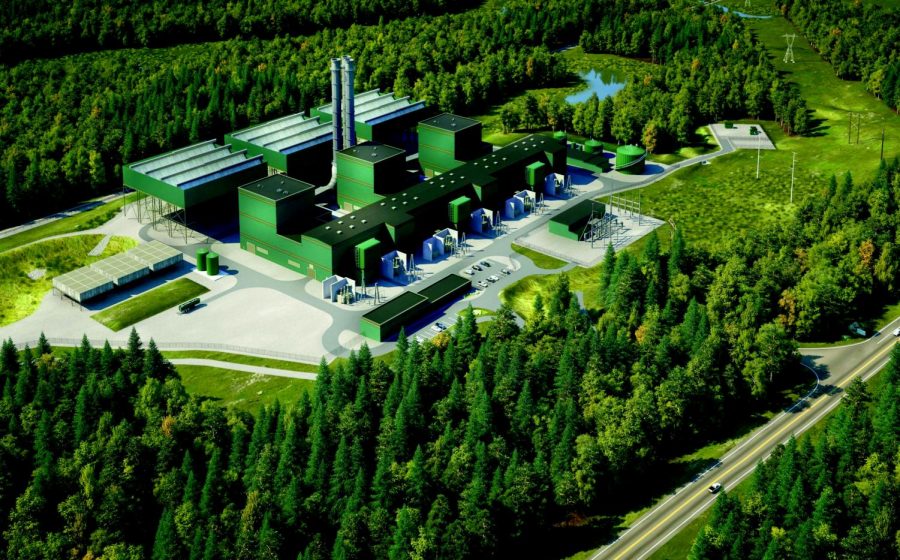Power Plant Controversy
Model of the Cricket Valley Energy Center, which is set to open in 2020.
Driving to school, students may pass a large structure in Dover, New York, and wonder what it is. Since 2009, the construction of the Cricket Valley Energy Center has been an ongoing process, employing 1,100 workers at a cost of $1.6 billion. According to Amy Wu from the Poughkeepsie Journal, a foundation has been laid, and construction workers are prepared to continue construction.
A significant number of Dover residents, however, oppose the plant, and are pushing for the development of more sustainable resources instead, such as wind or solar power. According to Katerina Koerting from Newstimes, many citizens are also angered that they were not informed of the project before it was approved. They have also raised concerns that chemical pollution produced by the plant will harm the health of people and livestock. Johanna Fallert, a local citizen, wrote a letter in 2017 rejecting the proposed plant: “We know better. Shouldn’t we be doing better? Shouldn’t we be building more wind and solar power, sooner rather than later?”
Four protestors, three farmers, and one PhD-qualified environmentalist have been arrested so far in demonstrations against the plant. Near midnight on January 15, 2019, four men tied themselves to tractors with chains near the entrance of the Center in an attempt to block construction trucks from reaching the site. When asked to unchain themselves, they refused and were arrested. According to protestor Benjamin Franklin Schwartz of Wassaic, a more environmentally-friendly solar energy plant has been approved for construction across the road from the Cricket Valley gas plant. Sachem HawkStorm, Chief of the Schaghticoke First Nations and a direct descendant of the great Wampanoag Chief Wasanegin Massasoit, has advocated for the voices of the indigenous community, saying, “This is a violation of our free, prior, and informed consent according to the United Nations Declaration on the rights of indigenous peoples, which was ratified by the United States government. Clean air, water, and land are inalienable human and natural rights. These rights cannot be superseded by a corporation for capital gain.”
Other political representatives, as well as the leaders of the center’s construction, argue that plants like these are important in the transition to cleaner energy. Alternative methods, they note, are dependent on wind or sunlight, yet energy is required by the community continually. According to Koerting, an air-quality monitoring system has been installed in Kent, Connecticut in response to health concerns. Republican Politician Kieran Lalor has argued that, compared with other plants which utilize fuel from fracking, the CVEC uses natural gas from the local Iroquois Pipeline and is, therefore, less environmentally harmful. Lalor also cited the economic opportunities that will come with the Center, including the employment of local workers. Lalor said, “I strongly support the Cricket Valley Energy Center, the jobs, [the] economic impact it will have on our county, and the clean, reliable energy it will bring to the Hudson Valley.”
Current plans indicate that the plant will be up and running by 2020, despite objections. Though the project’s leaders continue to reiterate the fact that it creates jobs for local residents, opponents have shown no signs of surrendering.






